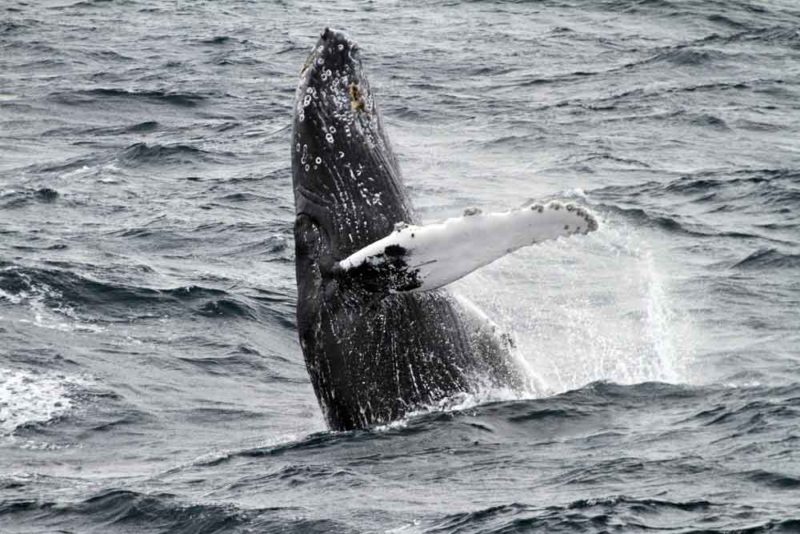Offshore wind power developer Equinor Wind US is entering a joint project with conservationists and scientists to deploy two new acoustic buoys to expand detection and monitoring of whales in the New York Bight.
To be operated with the Wildlife Conservation Society’s New York Aquarium and the Woods Hole Oceanographic Institution (WHOI) in Massachusetts, the buoys will provide near real-time monitoring of species including sei, fin and humpback whales, and the extremely endangered North Atlantic right whale.
The buoys will become a broader network with a previously deployed acoustic buoy, funded by the G. Unger Vetlesen Foundation and the Flora Family Foundation, now on station about 22 miles off New York.
It can be part of an early warning system for whale movements in the bight and useful planning ways to mitigate for environmental disturbance during wind turbine construction, Equinor and WCS representatives told an audience April 9 at the International Partnering Forum 2019, an offshore wind industry conference in New York City.
“The buoys will help marine conservation scientists increase their understanding of whale species that spend time in and migrate through the waters off the coasts of New York and New Jersey,” according to a statement issued by the project organizers. “The data will also help inform ecologically sound decisions for potential development within Equinor’s offshore wind lease site.”
Equinor plans to construct its Empire Wind power project on a 79,350-acre federal lease tucked between shipping separation lanes in and out of New York Harbor.
Fishermen and marine mammal experts have concern that noise from offshore wind turbines – including seismic surveys to map construction sites, pile driving during construction and vibration during turbine operation – may disrupt whales and other sea life in unforeseen ways.
The New York Bight region has seen a resurgence of that life in many ways since a cessation of ocean dumping in the last decades of the 20th century, better pollution controls and improvements in coastal water quality.
But there are still issues with protecting marine species, in particular the right whale. Now estimated to number around 450 animals, they are already prey to accidental death from ship strikes and entanglement in fishing gear.
The additional acoustic buoys could help efforts to protect the right whales, providing information on their movements to help make decisions on setting ship speed limits and other conservation actions.
The buoys will also send data for the public to learn about the whales and their behavior in coastal waters, with streaming data displayed on a public web page and eventually put on display at the New York Aquarium at Coney Island, N.Y.
“The newly deployed acoustic buoys significantly increase our coverage off the coasts of New York and New Jersey to detect whale presence in near-real time. This information will help us answer questions about how these four whale species, including the North Atlantic right whale, are moving through and using our local waters,” said Dr. Howard Rosenbaum, Senior Scientist for the New York Aquarium and Director of WCS’s Ocean Giants Program, in announcing the project.
“The offshore wind industry has a logical role to play as a partner to marine biologists and others interested in better understanding and preserving the health of our oceans,” said Christer af Geijerstam, president of Equinor Wind US. “This project will also help make Equinor better stewards of this lease site by providing data that informs our operational decision-making well into the future.”




